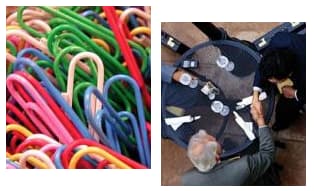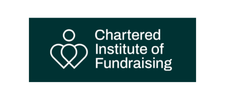‘Nonprofit?’ Donors have no idea what you do with their money. And, frankly, they suspect the worst
- Written by
- Tom Ahern
- Added
- January 03, 2014

How loyal is the average donor?
Not very, it seems.
‘In many large national programmes fuelled by direct mail’, Mal Warwick observed in 2005, ‘no more than 25 to 35 per cent of newly acquired donors ever give so much as a second gift.’
And that was then. These numbers never go up; they always get worse. A 2012 report from the Direct Marketing Association in the USA found that response rates to direct mail had dropped ‘nearly 25 per cent over the past nine years’.
It’s relatively easy to get a first gift. It’s consistently hard to get a second gift, especially during a worldwide economic downturn that leaves everyone feeling poorer.
There’s more bad news. ‘Public confidence in charitable organisations ... continues to stagnate and shows no signs of recovering [from a 2001 decline], according to ... the Brookings Institution,’ the Chronicle of Philanthropy reported in September 2004.
Only 11 per cent of Americans thought charities did a ‘very good’ job of spending money, said Brookings. The other 89 per cent had their doubts. In fact, more than one-quarter of Americans in 2004 believed charities were inept at managing money, according to the report.
And that was before the Great Recession made everyone grumpy. As I said, these numbers never get better.
Be aware: charities are guilty until proven innocent

Part of the problem is the name, I suppose. We call ourselves ‘nonprofits’.
And what does that label say subliminally to the layperson? That we really don’t care about money.
UK researchers once asked donors to guess, ‘What percentage of your gift does your favourite charity spend on its fundraising activities, rather than on programmes?’
Prepare yourself.
Donors – yes, donors – believed that most of their gift, fully 65 per cent, never went into the field. It was instead ploughed back into fundraising and related overheads, leaving only a small share, a mere 35 per cent, for changing the world.
And yet they still gave.
Imagine how much more they might have given had they only known the truth.
Prime messaging opportunity

Of course you’re protesting, ‘That's so unfair! We pour almost everything we’re given directly into programmes. We spend as little as possible on fundraising.’
You know that. I know that. But your donors don’t know that.
You have to remind them of your organisation’s dedication to transparency, accountability and financial health frequently: on your website, in your direct mail, in your face-to-face solicitations and in every issue of your newsletter.
Go ahead, check right now. I’ll wait.
Bruce Campbell, a pioneering researcher into donor attitudes and behaviour, found that ‘information regarding how finances are used’ was among donors’ top concerns. They wonder, ‘Did you spend my money on paper clips and business lunches? Or did you really use my gift to change the world?’
Don’t leave your donors guessing on this point. They will guess wrong...and not in your favour.
One real reason renewal rates, retention rates and long-term loyalty stubbornly remain so abysmally low is because donor scepticism has been left to fester.
What an opportunity....
How you can win

I teach that: the charities with the best ‘thank yous’ win.
But it’s the same with trust: the charities that establish a strong sense of trustworthiness amongst their donors will win in the long run.
















